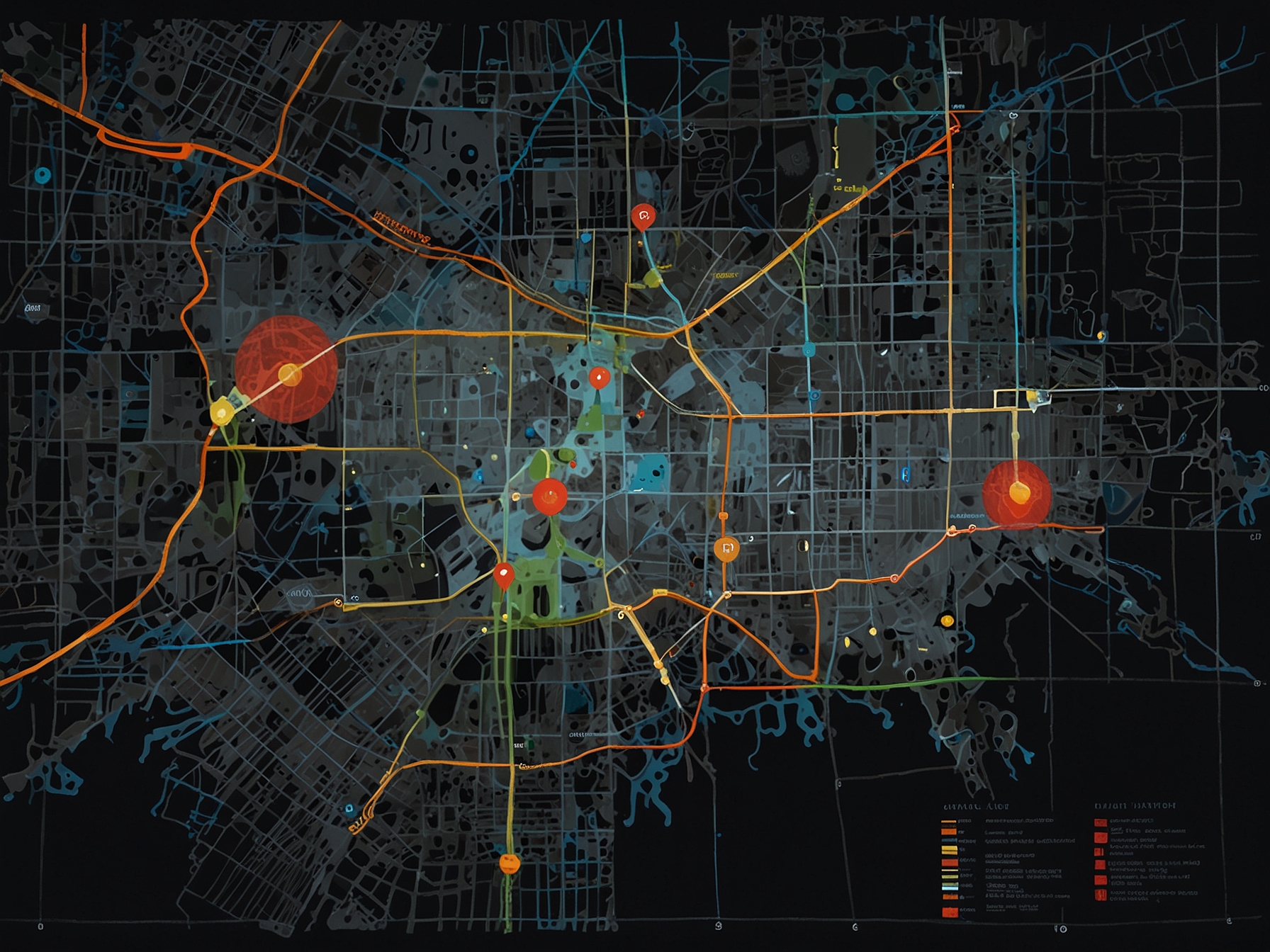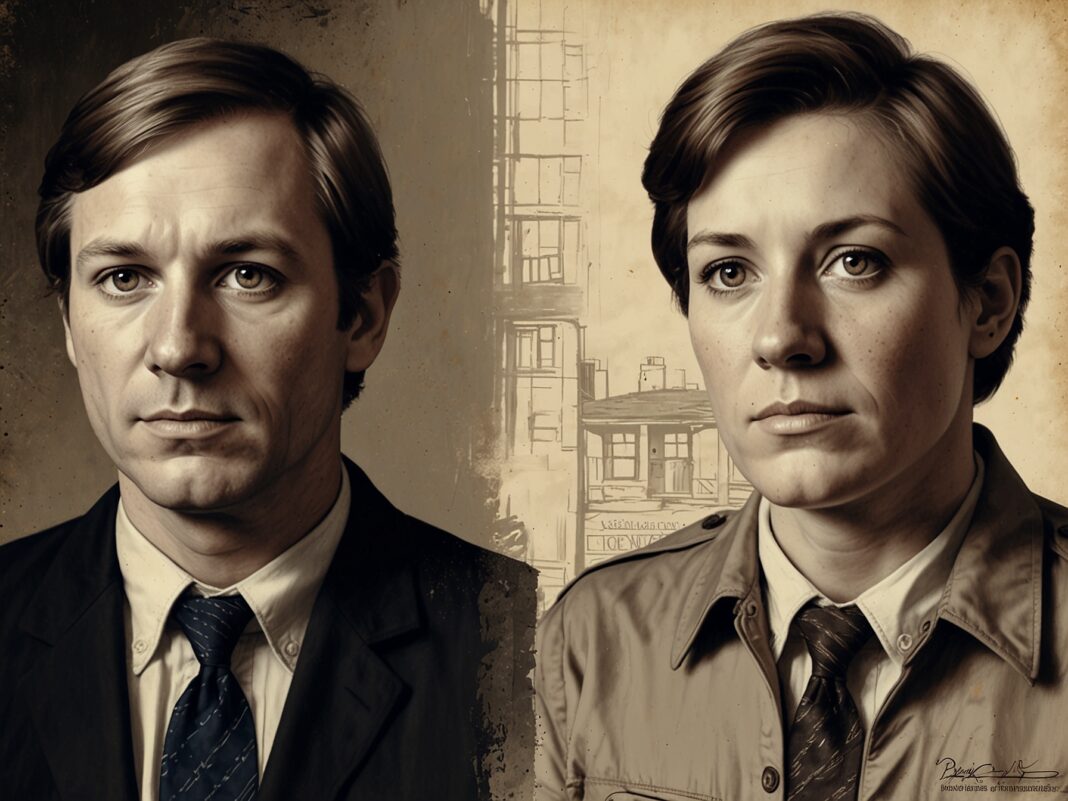40 years ago, the Tice & Gilmour case baffled investigators and left communities in fear, as the highly elusive killer evaded all traditional methods of capture. This gripping saga took a dramatic turn as scientific advancements redefined the very fabric of modern policing, bringing new hope to seemingly insurmountable cold cases. In the second episode of ’40 Years Cold’, we delve into how science revolutionized investigative processes and provided critical breakthroughs, proving indispensable in closing the case that eluded justice for so long.

© FNEWS.AI – Images created and owned by Fnews.AI, any use beyond the permitted scope requires written consent from Fnews.AI
At the heart of these advancements lies the evolution of forensic science, a field that experienced exponential growth over recent decades. In the early days of the Tice & Gilmour investigation, the forensic toolkit was rudimentary at best, offering limited support to detectives. The most sophisticated tools available included rudimentary fingerprinting techniques and basic serological testing. While these methods laid essential groundwork, they were simply not advanced enough to crack complex cases involving highly meticulous offenders.
As the years progressed, DNA profiling emerged as a game-changer in forensic science. The discovery of DNA’s unique and unalterable signature for each individual revolutionized the identification process, transforming the landscape of criminal investigations. By the late 1980s and early 1990s, DNA profiling became more accessible and reliable, enabling investigators to generate compelling evidence from minuscule biological samples like hair, blood, or skin cells. This technique would eventually prove instrumental in reinvigorating the Tice & Gilmour case, offering fresh leads long after the initial evidence was collected.

© FNEWS.AI – Images created and owned by Fnews.AI, any use beyond the permitted scope requires written consent from Fnews.AI
Another monumental advancement in modern policing came through the digitization and integration of data. Previously, investigations relied heavily on physical evidence stored in disparate locations, making it cumbersome to cross-reference information. The advent of sophisticated databases and digital records enabled seamless access to an expansive pool of data, enhancing the ability to connect seemingly unrelated clues. Systems like CODIS (Combined DNA Index System) revolutionized crime-solving by ensuring that DNA profiles from across the nation could be compared efficiently, exposing potential matches that might otherwise have been overlooked.
Furthermore, advancements in technology introduced enhanced methods for forensic analysis beyond DNA. Palynology, the study of dust and pollen, supplied crucial geographical clues by allowing investigators to determine the origin of a sample with remarkable precision. This method aided in refining suspect lists and narrowing down potential locations associated with the Tice & Gilmour case. Similarly, advances in digital forensics enabled the extraction and analysis of data from electronic devices, unearthing vital information that could lead to new leads or corroborate existing evidence.
Renewed interest in cold cases, coupled with advancements in media and public engagement, also played a significant role. Television, podcasts, and social media transformed public interaction with these cases, encouraging collective efforts in the pursuit of justice. The Tice & Gilmour case, much like others that captured public attention, benefited from this augmented interest as individuals shared tips, theories, and recollections, often provoked by media coverage. The collaborative synergy between the public, media, and law enforcement produced a fertile ground for breakthroughs and renewed efforts in dormant investigations.
Scientific breakthroughs extended beyond physical and digital evidence to include enhanced profiling and behavioral analysis techniques. Utilizing psychological profiling modeled on cumulative data and expert assessments, investigators were able to build detailed profiles of potential suspects. These profiles, grounded in behavioral science, provided nuanced insights into the perpetrator’s likely traits and patterns, narrowing the scope of investigation and directing resources more efficiently. In the case of Tice & Gilmour, these refined profiling techniques illuminated key aspects of the criminal’s methodology and psychological state, offering direction for the investigation as it resurged with the aid of new forensic findings.
Another scientific marvel that played a role in modern policing was Geographic Information Systems (GIS). GIS technology provided investigators with tools to analyze spatial and temporal patterns, contributing valuable geographic perspectives to crime scene analysis. By mapping out crime locations and examining spatial correlations, GIS technology facilitated the identification of hotspots, escape routes, and potential hideouts. The application of GIS in the Tice & Gilmour case showcased how spatial analysis could reveal critical behavioral patterns that aligned with the investigative narrative, providing yet another layer of indispensable support to the case-solving process.
As the Tice & Gilmour case reopened with newfound scientific vigor, the synergy between legacy evidence and modern techniques culminated in pivotal breakthroughs. Cold cases, by nature frustrating and protracted, showcase the immense potential that lies within the harmonious blend of traditional investigative intuition and cutting-edge scientific advancements. Today, the field of forensic science continues to evolve, promising even greater strides in the relentless pursuit of justice.
In conclusion, the Tice & Gilmour case underscores the transformative impact that science has had on modern policing. From the foundational strides of DNA profiling to the sophisticated integration of digital data and spatial analysis, advancements in forensic science have fundamentally reshaped investigative practices. These scientific breakthroughs not only breathed new life into cold cases but also set a precedent for future investigations, ensuring that justice could be served regardless of the passing of time. As we reflect on the 40-year journey of this remarkable case, we are reminded of the relentless quest for truth and the unyielding progress of science in the realm of law enforcement.
Was this content helpful to you?





